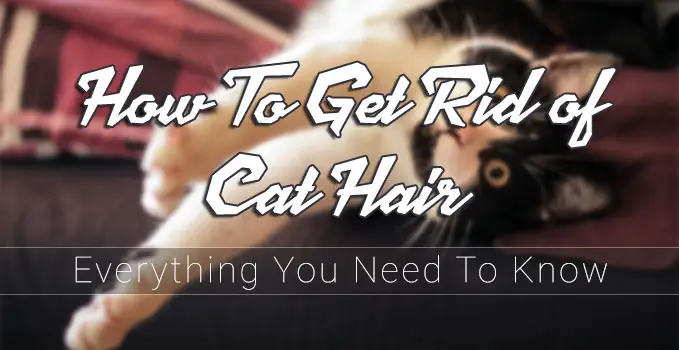How To Get Rid Of Cat Hair!
Your cat is adorable, even when they’re incredibly annoying. They may fight you sometimes, but you know that they also love you like nothing else in this world.
However, there’s one thing about felines that is just plain irritating. It’s the shedding—the clumps of hair that are stuck on your couch, carpet and clothes.
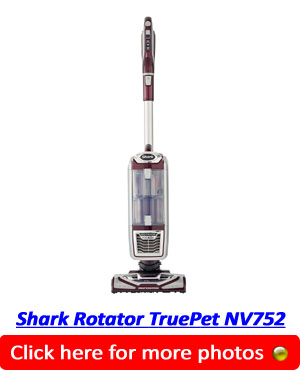 What can you do to solve this problem?
What can you do to solve this problem?
Well, in the first instance you can get yourself a quality pet vacuum to keep on top of all the hair and dander.
I recommend the Shark Rotator TruePet NV752 which is the best pet vacuum cleaner 2018 according to our own comprehensive research and the reviews of other people who use the TruePet NV752 at home.
Also in the rest of this guide, you’ll learn helpful tricks and tips that you can apply to your own cleaning routine. With these clever solutions, cat hair won’t be such a problem anymore.
But first, do you even know why your cat sheds hair? If not, read on to the next section of this guide to find out more.
Table of Contents
- 1 Why Do Cats Shed?
- 2 Why Does My Cat Shed So Much?
- 3 10 Most Shedding Cat Breeds
- 4 How to Stop a Cat from Shedding?
- 5 How To Get Rid of Cat Hair?
- 6 How to Remove Cat Hair Off Couch
- 7 How to Get Cat Hair Out of Carpet
- 8 How to Get Cat Hair Out of Hardwood, Laminate and Tile
- 9 How to Remove Cat Hair Off Clothes
- 10 Conclusion
Why Do Cats Shed?
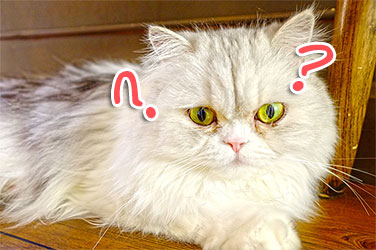 Shedding is common with most furry animals. It is a part of their hair growth cycle, which has four phases.
Shedding is common with most furry animals. It is a part of their hair growth cycle, which has four phases.
The first phase is the anagen phase. This is when new hair cells are created and formed, allowing new hair strands to grow. The amount of time that it takes for new hair cells to grow depends on the breed of your puss.
The second phase is the telogen phase. It’s a resting period between the anagen and catagen phases, during which hair growth begins to slow down.
The third phase is the catagen phase, or the regressing phase, which is when the hair cells are signaled to stop growing. During this phase, the outer root sheath (ORS) attaches to the hair, acting as a sleeve that covers each strand.
Lastly, the exogen phase is when your cat’s hair sheds. During this phase, old hair falls out so new ones can grow.
The strands of your cat’s fur do not go through these four phases all at the same time. If they did, your kitty will be bald for a certain period of time. Note, also, that the exogen phase usually happens during the spring and fall.
In springtime, your feline friend sheds the hair that it has grown over the winter. It prepares your pet’s body for the upcoming hot summer weather. Meanwhile, during the fall, your cat may also shed to remove any old hair follicles that prevents its winter coat from growing.
Why Does My Cat Shed So Much?
There are multiple reasons as to why your cat sheds so much hair. For one, it may not be getting proper nutrition from its food. You should look at the label of the pet food you buy for your kitty and see if it provides the right amounts of crude protein, fat and fiber.
You must also check the bioavailability of its raw ingredients. The pet food you buy should have an adequate protein source that is specifically named on the label. Also, avoid buying pet foods that have any meat byproducts listed as an ingredient. This usually refers to rejected meat parts and waste cuts.
Hyperthyroidism in cats may also be the reason that your feline is losing hair. The excessive production of thyroid is a common hormonal problem in cats. There are three solutions to the problem, all of which can only be done under the supervision of a vet.
One, your feline friend may need to take an oral anti-thyroid medication for the rest of its life. Two, the vet may remove its thyroid gland through surgery. And three, your cat might be advised to undergo radioactive iodine treatment for a couple days to a few weeks.
Another possible reason behind your cat’s excessive shedding is allergies. If your kitty has allergies, it will scratch its body nonstop, resulting to unnatural hair fall.
If you think your cat is experiencing an allergy (or has any other skin condition that requires attention), you must immediately bring it to the vet. A vet will normally prescribe a medication that you will apply to your feline’s coat.
10 Most Shedding Cat Breeds
However, your cat may also just be a natural shedder. There are several breeds of felines that shed regularly for most of the year. For example, here are ten of the most shedding breeds:
American Bobtail
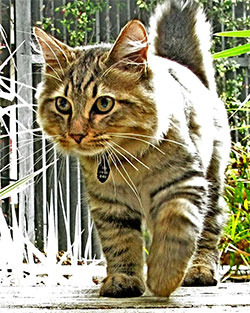
The American Bobtail is most famous for its short and adorable tail. Its coat can either be dense and short, or moderate and long. To keep its coat shiny and healthy, the American Bobtail needs to be bathed occasionally and brushed lightly.
Chartreux
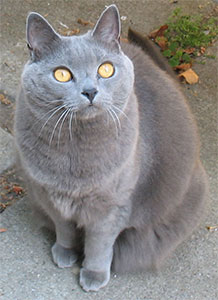
Without a doubt, the Chartreux’s most striking feature is its uniquely textured and colored coat. It has a bluish gray fur that gives it an interesting look. It also has a dense undercoat that provides protection and gives its body a wool-like texture.
Cymric
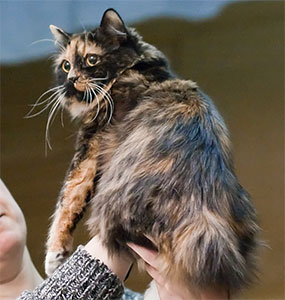
A lot of people call the Cymric a “cabbit” because it looks like the offspring of a cat and a rabbit. This breed has a long, soft, and silky double coat that may experience great shedding.
It needs to be brushed several times a week so that its natural oil can be equally distributed throughout its coat. Regular brushing will also remove tangled dead hair from its body.
Maine
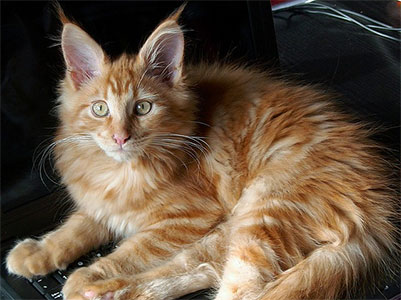
The Maine used to be a barn cat, but it is now recognized as the Highest Scoring Cat in Premiership by the Cat Fancier’s Association (CFA). The Maine has a long, silky, and oily coat that requires regular grooming.
Nebelung
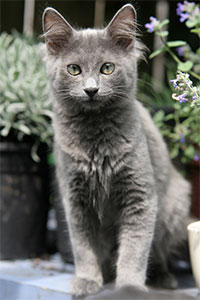
In German, the word “nebelung” means “creature of the mist”. This was the name given to the Nebelung cat because of its mesmerizing coat. It has a bluish silver color, and it looks like it’s floating from the cat’s body. The Nebelung has a dense coat that needs to be brushed twice a week.
Norwegian Forest
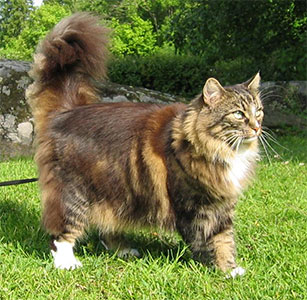
The Norwegian Forest cat, known as Skogkatt in its origin country Norway, is known for its long tail and furry coat. Due to the extreme winter weather conditions of its native land, this breed has developed a thick coat of fur to protect itself from the elements.
Its coarse coat only requires weekly brushing, but it may need additional attention during the spring.
Ragdoll
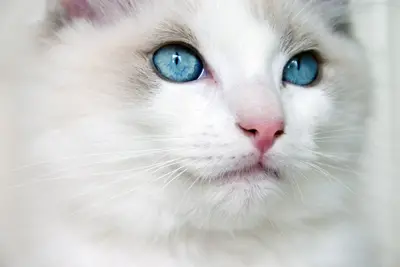
The Ragdoll has the most translucent blue eyes that captures the heart of people. It has a long, plush, and silky coat that requires regular brushing. Unlike most of the other cats in this list, the Ragdoll doesn’t have a dense undercoat. However, it still sheds a lot, especially during the transition of seasons.
Russian Blue
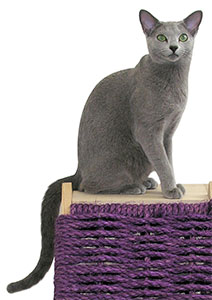
The Russian Blue cat has a bluish silver coat that looks good with its emerald doe eyes. It has a short but dense coat that is silky and lustrous. It doesn’t shed often, but its hair does fall a lot during its shedding season.
Typically, its coat doesn’t need much grooming; occasional combing is enough to keep its fur silky and smooth.
Selkirk Rex
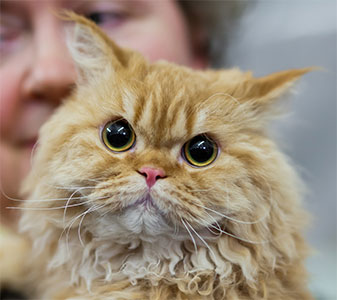
The Selkirk Rex has beautiful curly hair that is actually dominant in its gene, unlike other Rex breeds such as the Devon Rex and Cornish Rex. Because of its curls, the Selkirk Rex doesn’t need regular brushing.
Shampoos that coat the fur should also not be used if you want to maintain the curl. Instead, use a shampoo that simply cleans the cat’s hair.
Siberian
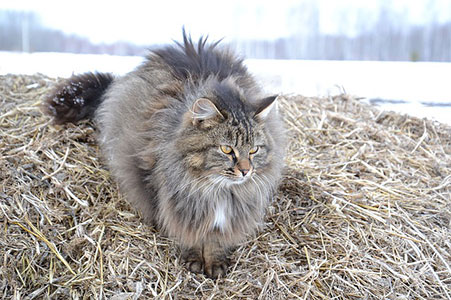
As the name suggests, the Siberian cat comes from Siberia, a vast province in Russia that has cold weather all year-round. Because of these extreme conditions, the Siberian cat had to adapt by developing a triple coat. Its long, dense and waterproof coat protects it from the cold.
The Siberian cat requires regular bathing and occasional brushing.
How to Stop a Cat from Shedding?
You can’t exactly stop a cat from shedding. As mentioned earlier, shedding is a natural part of the hair growth cycle. However, if your kitty sheds excessively, you might want to bring it to the vet for a check-up.
How To Get Rid of Cat Hair?
Since shedding cannot be prevented, your only option is to find ways on how to get rid of cat hair from your home. There are four places in the house where cat hair usually clumps—the couch, the carpet, the floor, and your clothes. To remove cat hair from these places, you can follow these simple solutions:
How to Remove Cat Hair Off Couch

For fabric-upholstered pieces of furniture, you can use a simple pair of rubber kitchen gloves to remove any clumps of cat hair stuck with the cloth fibers. Dampen the gloves with some water, and then run them through the surface of the couch.
You’ll notice hair getting caught on the gloves as you go along. When there’s too much fur on them, you can simply rinse them off and repeat the process as needed.
For leather-upholstered pieces of furniture, you can mix a cap of liquid fabric conditioner with a liter of water. Put the solution in a spray bottle, and then apply it to the furniture.
Use a cloth to wipe away the fur after you’ve sprayed the solution on the couch. Another leather-related solution is to use a wax polish. It will effectively remove the feline hair from your couch while it also restores your furniture’s shine.
How to Get Cat Hair Out of Carpet
You can use a pumice stone to scrape tangled feline hair from the carpet. The hair will cling onto the pumice stone without damaging your carpet or rugs. After separating the hair from the fibers, you can simply use a vacuum cleaner to suck in all of those clumps.
Speaking of vacuum cleaners, there are a lot of brands and models in the market, but not all of them are made for pet hair. If you don’t have a vacuum cleaner yet, here are the five best vacuum cleaners for pet hair.
The Dyson DC65 Animal Complete is a good model to go for since it has a Radial Root Cyclone technology that goes deep into the fibers of your carpet and rugs, providing them with the proper cleaning that they need and deserve. A good alternative from the same manufacturer is the Dyson V7 Animal which contains high-efficiency particulate air or HEPA filter system.
Vacuums from Shark are highly recommended as well as they are much better value and just as efficient.
We suggest you take a look at the Shark Rotator TruePet NV752 as this can pick up pet hair and dander from most types of surfaces including rugs and carpets. In fact, the Shark TruePet is our most recommended vacuum for cleaning up kitty litter and hair. The Shark Navigator deserves an honorable mention as well due to its Anti-Allergen Complete Seal Technology that will collect 99.99% of asthma-causing allergens.
How to Get Cat Hair Out of Hardwood, Laminate and Tile
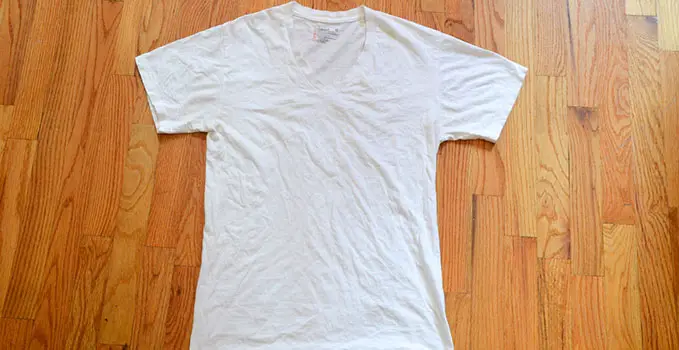
While you can also use vacuum cleaners on hardwood, laminate and tile floorings, it will be a lot quicker and easier if you use an electrostatic microfiber mop instead. Clumps of hair will cling onto the mop right away, while vacuum cleaners tend to blow them all over the place.
How to Remove Cat Hair Off Clothes
- One way to remove cat hair off from your clothes is to dampen your hands with some cold water. This is a quick and natural solution that you do in just seconds. Use the moisture to remove clumps of hair from your clothes. Make sure to wipe away in a downward motion and let gravity help you with the chore.
- Use a simple lint roller to remove feline hair from your clothes. Again, brush in a downward motion.
- Just like using a pair of kitchen gloves to remove kitty hair from your couch, you can use a damp kitchen sponge to remove hair from your clothes. The fur will gather in a clump, which you can easily pick up with your hand.
Conclusion
To summarize, here are a few points you need to remember about shedding:
One, shedding is a natural part of the hair growth cycle. There’s nothing you can do to prevent it from happening. However, if your feline is not a natural shedder and yet it sheds excessively, then you might consider bringing it to the vet for a check-up.
Two, there are three common reasons as to why your kitty is shedding excessively: The pet food that you’re giving your pet might be lacking proper amounts of nutrition, your furry friend may have hyperthyroidism, or your cat may be having allergies. Again, consult a vet to know what the proper course of action is.
Lastly, cat hair usually gathers in four places around your house: the couch, the carpet, the floor, and your clothes. These places require different methods of clean-up. We’ve summarized your options in the previous section of this guide.
Hopefully, with the tricks and tips that you’ve learned from this guide, you are now able to understand why your feline pet sheds and what you can do to clean up the mess. As a final reminder, remember that you can never go wrong with a high-quality vacuum cleaner to help you gather all those clumps of pet hair. Now you know how to get rid of cat hair!

